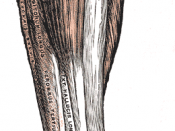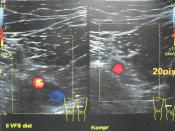ABSTRACT:
A number of deaths from pulmonary embolism caused by deep vein
thrombosis (DVT) have been attributed to long distance airplane travel. Although
airplane travel. Although airplanes provide the most convenient means of long distance
travel, the aircraft environment can take a physical toll on passengers. This article
describes the causes and risk factors for DVT discusses preventive strategies, and offers
recommendations for making air travel safer. (Feb. 2003)
BACKGROUND:
Learning about DVT, is important to comprehend the anatomy and function of the circulatory system. Blood flow provides the principal means of transporting metabolic necessities throughout the body and removing wastes from the body. Oxygen-rich blood from the lungs is pumped through the body by heart via a network of arteries. When the blood reaches an organ or tissue, it is carried away from the organ or tissue in reverse through a network of veins that return the blood to the heart for reoxygenation and release of the waste carbon dioxide.
The pressure propelling the blood through the arteries originates from the heart beat but is dissipated when the blood reaches the capillaries. The pressure to return the blood to the heart to the heart through the veins is much less vigorous and hampered by gravity. To assist in maintaining an adequate blood flow in veins, the main leg veins are positioned deep inside the leg muscles and contain a series of valves. With the help of leg muscle movements, the valves in the veins open and close to "Stair Step" the blood forward. The valves open during the heart beat and close during the resting phase. These valves help to advance the blood through the venous network toward the heart while preventing the back flow of blood in the lower legs. The blood flowing through the deepest...


